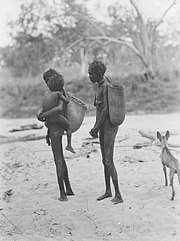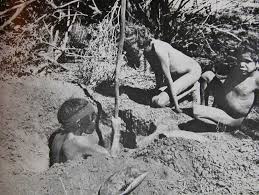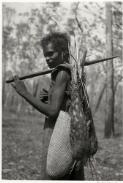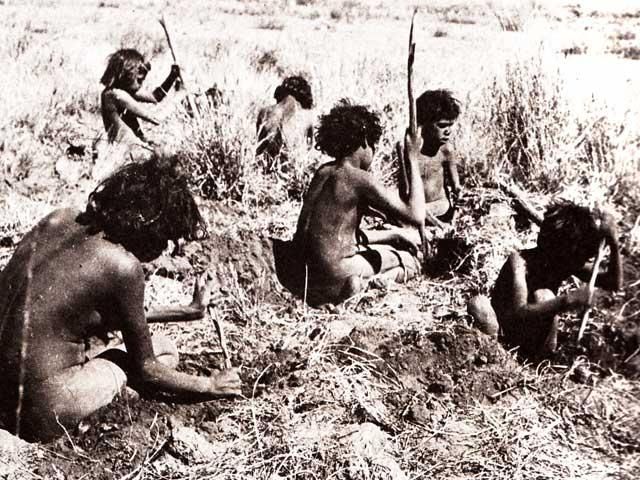Aboriginal Grain Farmers? - Well Maybe Not
After reading Mr Pascoe’s Dark Emu, we were ready to believe that pre-colonial, Aboriginal grain agriculture did exist. Mr Pascoe’s wonderful writing transported us to a great inland ‘Aboriginal Grain Belt’, complete with advanced agricultural practices, and the knowledge that “Aboriginal people did sow, irrigate and till the land…..to produce vast planted estates of cereals” ..…or so we were lead to believe.
Taking a leaf out of Mr Pascoe’s own book, we too decided to undertake, as he says, some “vigorous inquiry and generous doubt” and check one of the many scholarly references he has cited in Dark Emu. Unfortunately, the peer-reviewed reference we chose to investigate comes to completely the opposite view that Mr Pascoe is arguing in Dark Emu! In the following critique, we invite the reader to use some of Mr Pascoe’s “vigorous inquiry and generous doubt” to make up their own mind.
One of the important sources that Mr Pascoe cites for information on Aboriginal grain agriculture, is the researcher Harry Allen, who has three separate works cited in Dark Emu including, “The Bagundji of the Darling Basin: Cereal Gatherers in an Uncertain Environment” (1974). From the same, beloved explorers' accounts* that Mr Pascoe used for evidence in Dark Emu, as well as other historical records, Harry Allen was able to build up a model of Bagundji subsistence activities, but came to completely the opposite conclusion to Mr Pascoe with regard to the possible presence of pre-colonial Aboriginal agriculture. Harry Allen summarises his peer-reviewed findings in the abstract summary as follows:
“The Bagundji economy was primarily riverine in character based on the collection of aquatic foods and wild cereals. Seasonal variations in their subsistence activities can be related to seasonal variations in the productivity of their habitat. Despite a long period of association with wild cereals, the Bagundji remained hunters and gatherers and apparently made no attempt to cultivate these cereals. Possible reasons for this are examined. No simple explanation can be put forward to explain either the specific problem of the absence of agriculture from the Darling River Basin or the general problem of the absence of agriculture from Aboriginal Australia as a whole."
The reference Mr Pascoe cites doesn’t support his argument for Aboriginal grain agriculture at all, quite the contrary in fact. There is no mention of ‘tilling of soils and sowing and harvesting of grain by a sedentary, Aboriginal agricultural population living in houses in towns'. Even though Harry Allen acknowledges that the Bagundji had “fishing nets and traps”, “stone pens and wickerwork weirs used for fishing”, “nets up to 90m long and 18m deep for catching ducks”, “stacks of seed-grasses in hayricks or haycocks, which extended for miles”, and carried out practices such as, ‘spreading out seed-grasses on the sloping bank of the creek to dry’; ‘threshing seed-grasses with stones and storing seeds in skins and wooden vessels’, Harry Allen agrees that this was still all within the scope of the definition of a hunter-gatherer society. An analogy would be that if a modern Australian farmer goes with his family to pick blackberries, shoot rabbits or fish in the river, that doesn’t make them members of a hunter-gatherer society.
It appears that Mr Pascoe is adopting a Eurocentric bias when he claims that the simple use by the explorers in their journals of the European terms, ‘hay ricks’, ‘threshing’, ‘fish-weirs’ , ‘haycocks’, ‘seed-stores’, etc., elevates these Aboriginal gathering practices to the level of a ‘sophisticated Aboriginal agriculture’.
Let the reader decide – Download the unabridged, original, peer-reveiwed paper by Harry Allen (with the Abstract right at the end of the paper after the references) : here
* Explorers accounts by Mitchell, Sturt, Krefft, Beveridge, Curr, Matthews, Eyre, Howitt, et al.
One of our contributors Peter, is a farmer who understands both the growing of annual grasses for crops, and the nature of the native grasses under discussion. It was Pascoe’s claims with regard to the annual productivity of the inland, ‘Aboriginal agricultural grain belt’, that first made him sceptical of Pascoe’s book. Peter writes,
“We know that rainfall in the inland is erratic. The native millets grow prolifically when rain falls, but cannot be relied upon from one year to the next. We also know that explorers learned to carry out their expeditions in seasons following ample rain, because in the dry seasons they suffered from inability to find fresh water and feed for their animals. Therefore, is it reasonable to accept that the explorers’ journals reflect grain harvesting in exceptional seasons, not average seasons.
I know of no truly agricultural society that based its food supply on such an erratic harvest. The idea that Aboriginals would till and cultivate a species that will not grow in a dry year, and grows abundantly in wet years without cultivation..... is truly unreasonable.
On the contrary, it is well within the normal behaviour of Hunter-gatherer societies to gather to exploit known, naturally abundant foods - seeds, fruits, nut or animal and fish migrations - and then move on. I suggest that if you look at the native millets, they are predominantly a summer-growing species that colonises bare ground. It grows sparsely in established grasslands, which rules out it being a prolific source of food in the perennial grasslands that cover most of the current grain-growing areas.
It is doubly doubtful that it grew prolifically in the southern, winter-dominant- rainfall areas of the current grain belt as it is a grass that grows in summer, following summer rainfall. Where it does grow prolifically is in the arid zone where the ground is frequently bare because rainfall is erratic and perennial pastures do not survive well. Not only does this militate against agriculture because the erratic rainfall renders the results of “tilling and planting” unreliable from one year to the next, but when rain does fall, native millets grows prolifically without requiring cultivation and planting.
There is nothing about this that makes agriculture as we understand it, likely”.
Images of the daily life of ‘hunter-gathers’. Copyright State Library of Victoria, Museum NSW, et al.









